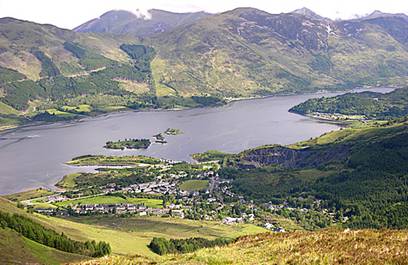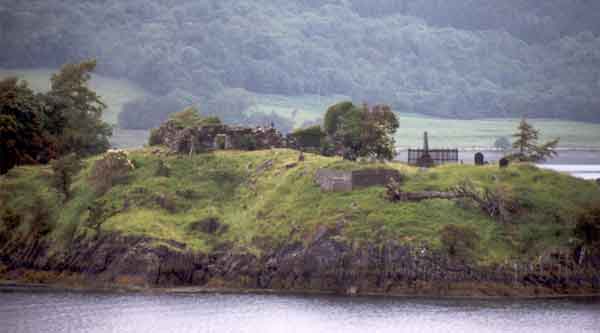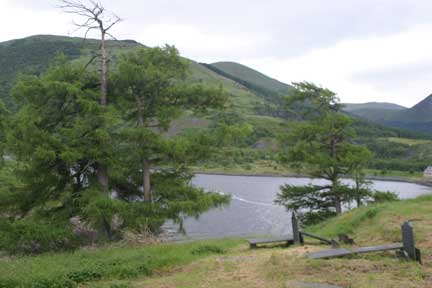Eilean Munde
Located on Loch Leven in Glencoe close to the Ballachulish Church that also has many MacInneses in its graveyard, this is the burial isle for the Stewarts of Ballachulish & Ardsheal, the MacDonalds of Glencoe, the Camerons of Callart, the Appin Stewarts as well as others from the Glencoe area. It is said that Alasdair MacDonald (MacIain of Glencoe) was buried here after the Glencoe massacre of 1692. The Glencoe Center is not far away which has highlights of this famous massacre.
The island is only accessible by boat. Some of the island is cared for, but many of the burial sites have fallen into disarray. Every year a volunteer group of people of MacInnes and MacDonald come to the island and clean as much of the overgrowth as they can. One of the Clan MacInnes officers has family buried on the island, and participates in this clean up.
Many of the stones and slabs are made of slate and come from the Ballachulish Slate Quarry. Some of these stones are extremely large, considering that they must be hand carried in boats and taken up some difficult terrain.
You will see the name both Munda or Munde. Eilean means island. Eilean Munde was named after St. Fintan Mundus of Argyle, an Irish disciple of St. Columba. St. Columba established the other well-known MacInnes burial site, Kiel Church. St. Mundus came from Iona in the 7th century and established several abbeys, including one on the island which is now in ruins. The church had burned in 1495 but rebuilt. The last service was in July of 1693. St. Mundus died in 962.
Fintan Munnu (Mundus appears to be Latinized) was of the Ui-Neill clan in Ireland and trained as a monk. His birth year is unknown, but he died in 635AD. He studied at Bangor and at Cluain-Innis. As a young monk, he arrived on Iona shortly after Columba died and was sent back to Ireland to found his own monastery as its Abbot. He arrived in Alba in about 600AD and founded several churches. His final parish was on Eilean Nam Munde (Isle of the Teacher) which later became known as Eilean Nam Mairbh (Isle of the Dead). The Irish Gaelic word munnu means “to learn” or “to teach”.
It is rumored that the island is guarded (or haunted?) by the spirit of the last person buried there who cannot enter Paradise until the next is buried.
Below is a picture tour of the island.
A view of Ballachulish Village and Loch Leven with Eilean Munde left of center. |
|||||||
|
|||||||
The island. |
|||||||
|
The island near the landing site. |
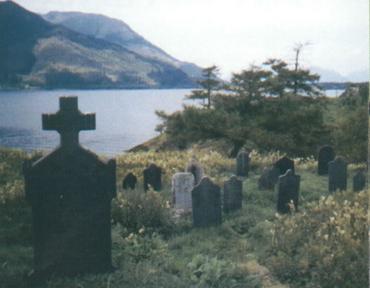 Some stones and markers looking over the hill. |
||||||
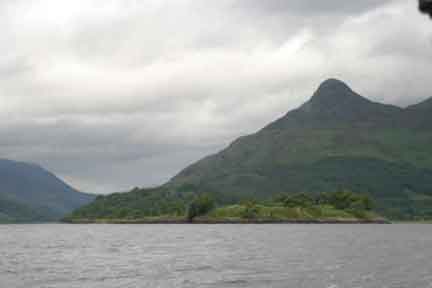 Coming into the island, the hills behind. |
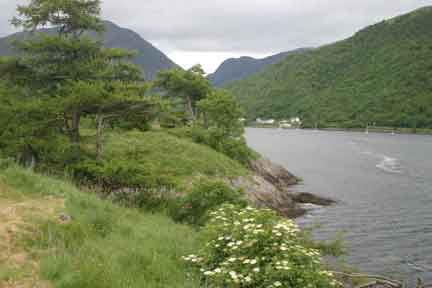 The side and greenery. |
||||||
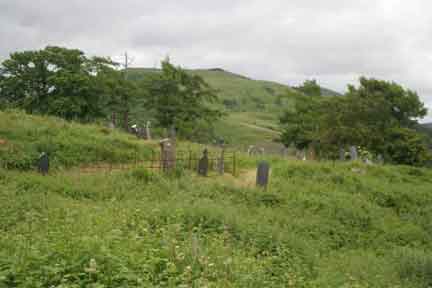 Part of the area with heavy overgrowth. This is just off a trail. |
 This is possibly the church, Celtic cross outside. |
||||||
|
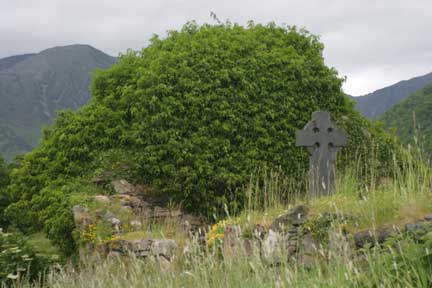 Looking into the church ruins. |
||||||
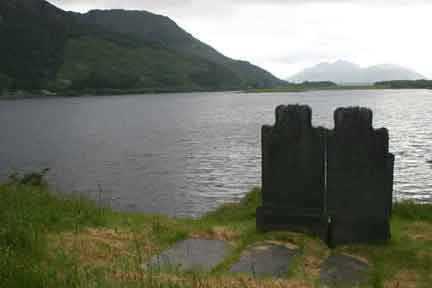 A view back to the mainland. |
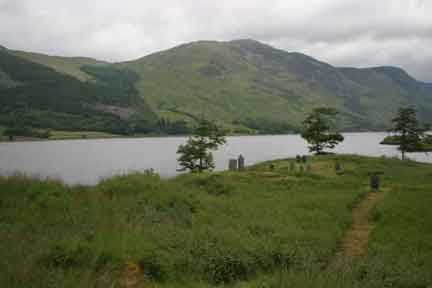 A view down the trail to the better kept part. |
||||||
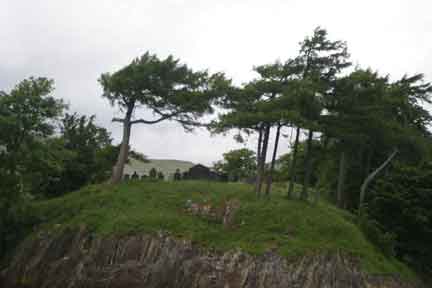 Looking up the hill from the landing site. |
 One of the majestic trees on one end. |
||||||
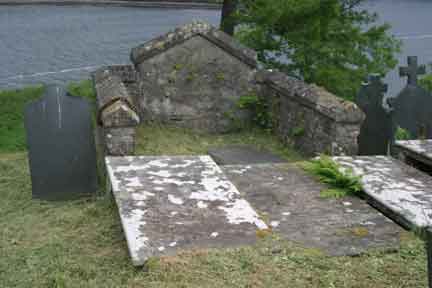 A crypt near the edge. |
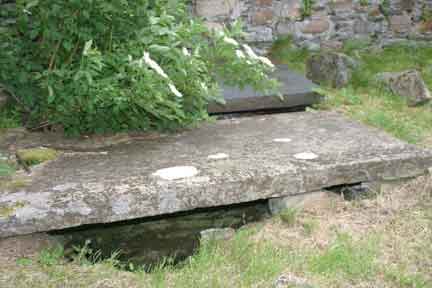 One of the very heavy slabs, the top one slate and about 10ft long. |
||||||
 A MacInnes stone. |
 A Celtic cross. |
||||||
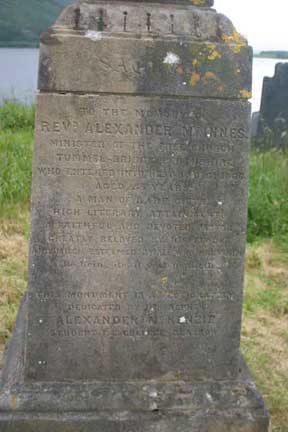 A Reverend MacInnes, died 1866. |
 A slate MacInnes marker. |
||||||
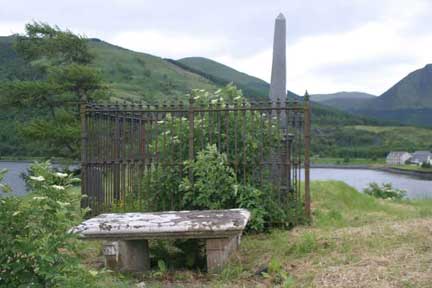 Iron gate. |
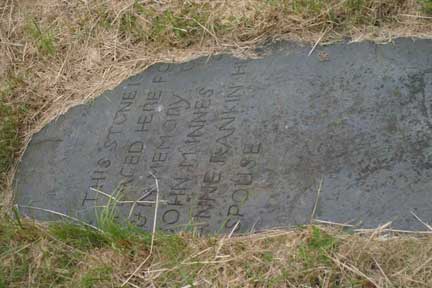 A MacInnes in the older section. |
||||||
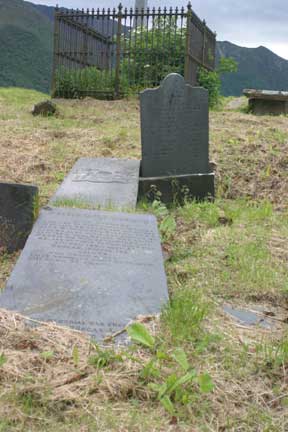 Another shot like above. |
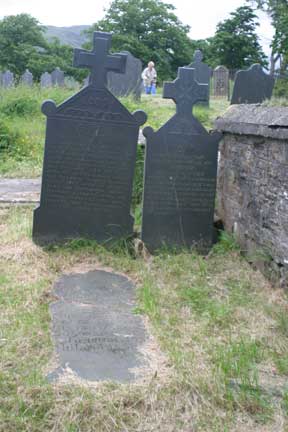 Some very nice slate stones. |
||||||
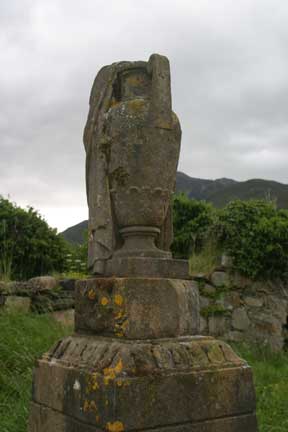 A more interesting marker. |
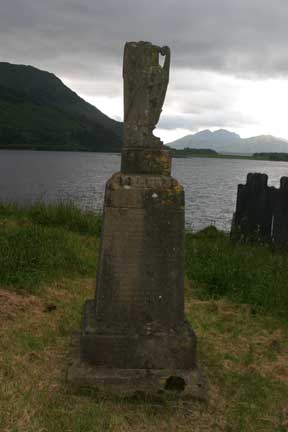 This shows the size of the marker. |
||||||
 The small tug-like boat "Loch Fyne". |
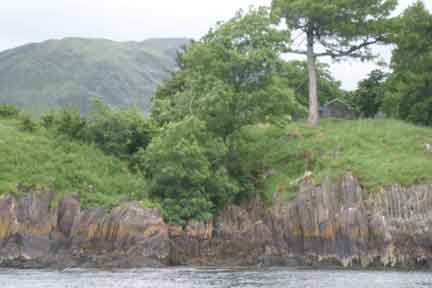 The banks of the island. |
||||||
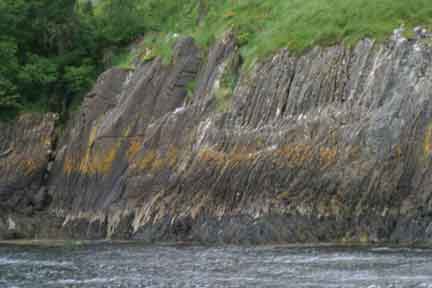 A steeper part of the bank. |
 The landing, very hard and sharp rocks, slippery with algae. |
||||||
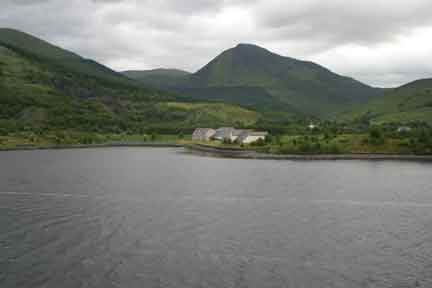 A distance to the launch area. |
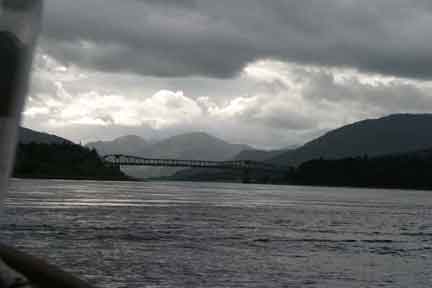 Looking back to the bridge to Ballachulish. |
||||||
| References: | John McInnis June 26, 2009 Private email. Some of the narrative is from John. |
| Colin MacInnes June 23, 2009 Private email. Reviewed the site for accuracy. |
